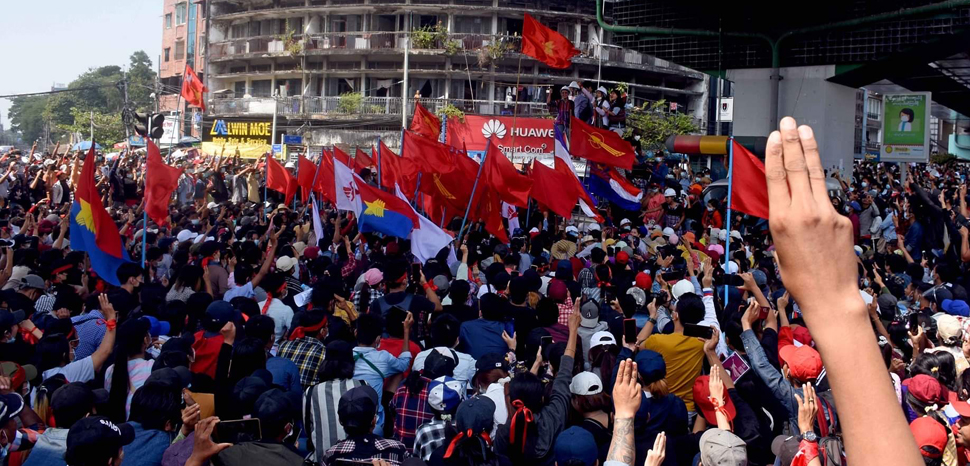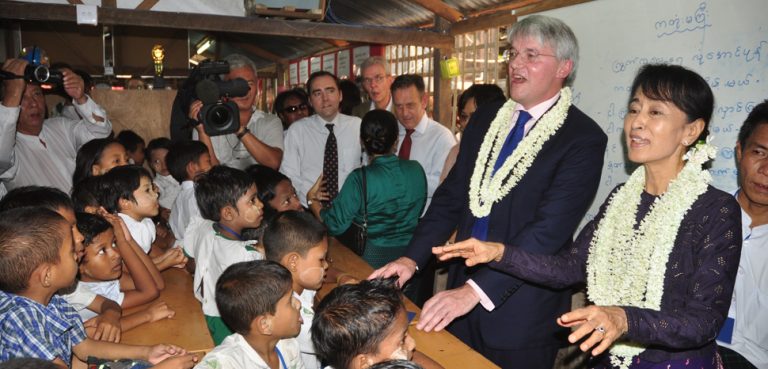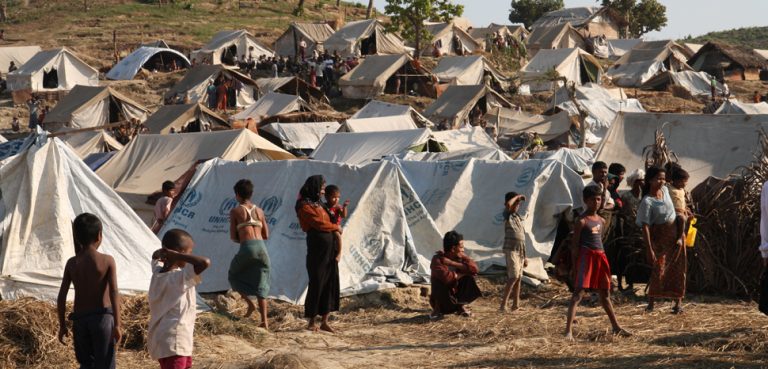The Myanmar crisis has spilled well beyond its borders, with Karen refugees seeking protection in neighbouring Thailand and the Tatmadaw targeting civilians protesting the February coup d’état. Increasing cases of violence have registered with the international community, as casualties crossed more than 100 on a single day. In the wake of the violence, defence chiefs from the United States, Australia, New Zealand, South Korea, the UK and others came together to issue a joint statement calling on the military junta to desist from further violence. While Japan was among them, India was conspicuously absent from the group and was among eight countries that sent a representative to Myanmar’s Armed Forces Day festivities in Naypyitaw.
While Japan has shown some movement toward international consensus of late, both India and Japan have walked a tightrope with respect to policy in Myanmar, motivated by geopolitical and domestic considerations rather than seeking to ensure a return of democracy. Japan was behind other Quad members in condemning the military coup, and India, while joining Australia and the United States in issuing statements of concern, quickly turned its attention to domestic and security considerations.
For Japan and India, the relationships that both countries have with Myanmar are based on pragmatism. India’s nuanced policy is guided by an overwhelming concern for its own internal security in its northeastern states, while Japan has maintained a friendship with Myanmar out of geopolitical concerns, primarily its strategic competition with Beijing.
For India, security is the primary concern. Myanmar shares a porous 1,600-kilometer land border with India, which include the states of Arunachal Pradesh, Mizoram, Nagaland, and Manipur. Of the Indian states that face the most direct consequences of the Tatmadaw’s ongoing crackdown, Mizoram is of chief concern to New Delhi. India maintains a defence attaché in Myanmar for close coordination. Recently the UN Secretary General Special Envoy on Myanmar, Christine Schraner Burgener, told the Security Council that the influx of refugees from Myanmar at the Indian and Thai borders was “ominous and was likely just the beginning” of a larger problem. Since that time, the central government in New Delhi has begun to tighten its border, despite Zoramthanga, the Chief Minister of Mizoram urging the central government to reverse its foreign policy based on humanitarian grounds. Zoramthanga recently also held a video meeting with Foreign Minister of Myanmar Zin Mar Aung.
Three drivers are at the heart of India’s cold stance on refugees. India needs Myanmar’s cooperation on insurgent groups operating in its northeast, which find safe haven in Myanmar. Second, China’s growing footprint in Myanmar and increasing proximity with certain domestic groups complicate India’s internal security threats. This has necessitated that India maintain a workable relationship with the Tatmadaw despite international pressure and damage to its international reputation. Myanmar is of critical importance to security in the Bay of Bengal and corridor-connectivity with the northeast. The refugee crisis that the Myanmar crisis portends flies in the face of promises made by India’s ruling party, the Bharatiya Janata Party (BJP), to make its poll-bound states of West Bengal and Assam “refugee-free,” adding to their history of anti-immigrant policies. Ruling parties have made illegal immigrants in India, especially from Bangladesh, a strong political issue.
For Japan, its calculated policy on Myanmar is driven by the desire to recoup economic investments and its strategic rivalry in Southeast Asia with Beijing. Both Japan and China strongly consider Myanmar a strategic hub, not only as Southeast Asia’s wild west, but as conduits for larger regional gains, from shipping, critical infrastructure, natural gas, and minerals. Japan, like China, is an important economic contributor, one of the top direct investors in Myanmar, and one of its largest trading partners. Japan has invested heavily in infrastructure in Myanmar, particularly rail upgrades. During the transition to civilian rule, Japanese investment in Myanmar had reached an all-time high of more than $1.5 billion.
However, following the abrupt transition to military rule, Japan’s policy now in flux. In the past, Tokyo believed that dialogue with the military was essential, as was avoiding any talk of economic sanctions, which Tokyo believed would only push Myanmar closer to China.
Japan would also like to reap the benefits of years of investment in the country. When the West imposed a series of economic sanctions on Myanmar following violence in Rakhine state that pushed more than 700,000 Rohingya Muslims into neighbouring Bangladesh, Tokyo began to worry as China filled the gap in foreign investment and in external legitimacy.
Japan is thus stuck between being strongly urged to use its connections in Myanmar to call for a return to democratic rule, and its ongoing geopolitical contest with China. Tokyo has been telling Western allies that the dividends from its relationship with the military has the potential to calm an explosive situation and put the country back on track toward democratic rule. This is in part because Tokyo believes that years of resistance to punishing Myanmar’s military has given it an edge. But this idea is now fading, as are its hopes. Japan is being pulled by the United States to align itself with the international community in supporting more punitive measures, such as suspending economic aid. Foreign Minister Toshimitsu Motegi recently noted that Japan’s suspension of new aid would send a “clear” message, but stopped short of mentioning economic sanctions. Japanese official development assistance to Myanmar in 2019 totalled more than $1.8 billion. Economic sanctions—particularly those aimed at the military—would cripple bilateral ties and expose the already nervous 427 Japanese companies operating in Myanmar to additional risk.
Both Japan and India have made deliberate attempts to pacify critics with statements encouraging the return of democratic rule. India’s position is complicated by a recent request by the Tatmadaw to deport some Burmese nationals, including some security personnel who crossed over into India to escape political persecution. Human rights groups are calling on India to take a more human rights-based approach. Japan is at a similar crossroads. Critics urge that Japan moderate its policy in Myanmar in line with that of international law and human rights, working in concert with Canada, the United States, and the UK to cripple sources of funding that perpetuate and legitimize Tatmadaw rule. Japan is likely to continue its tightrope policy, as it has in other contexts in the region, such as Cambodia. India will likely prioritise its own domestic and international security concerns over any external pressure.
Japan and India have less than stellar records in supporting the plight of refugees and maintaining a consistent approach to democratization in Myanmar. As ASEAN faces a growing crisis, two of its most important partners are failing to send consistent signals. India’s policy toward the Rohingya is driven by domestic political concerns and Japan has refrained from efforts to support justice mechanisms or human rights resolutions in both the UN Human Rights Council and the General Assembly. India has yet to become a signatory to the 1951 UN Convention of Refugees or its 1967 Protocol. India’s Ministry of Home Affairs once labelled the Rohingya as a national security threat.
As the crisis worsens, Japan and India will face greater pressure, particularly on humanitarian grounds. Japan is already feeling pressure internally, as some Liberal Democratic Party (LDP) members have already diverged from the party line. The Japanese public is also uneasy about the government’s position. India’s lengthy border is a likely entry point for thousands seeking refuge and it will, as it has in the past, obey the principle of non-refoulement.
But as Myanmar’s crisis worsens, it’s increasingly possible that both countries will be forced off the delicate policy tightrope they’re currently walking.
The views expressed in this article are those of the authors alone and do not necessarily reflect those of Geopoliticalmonitor.com




